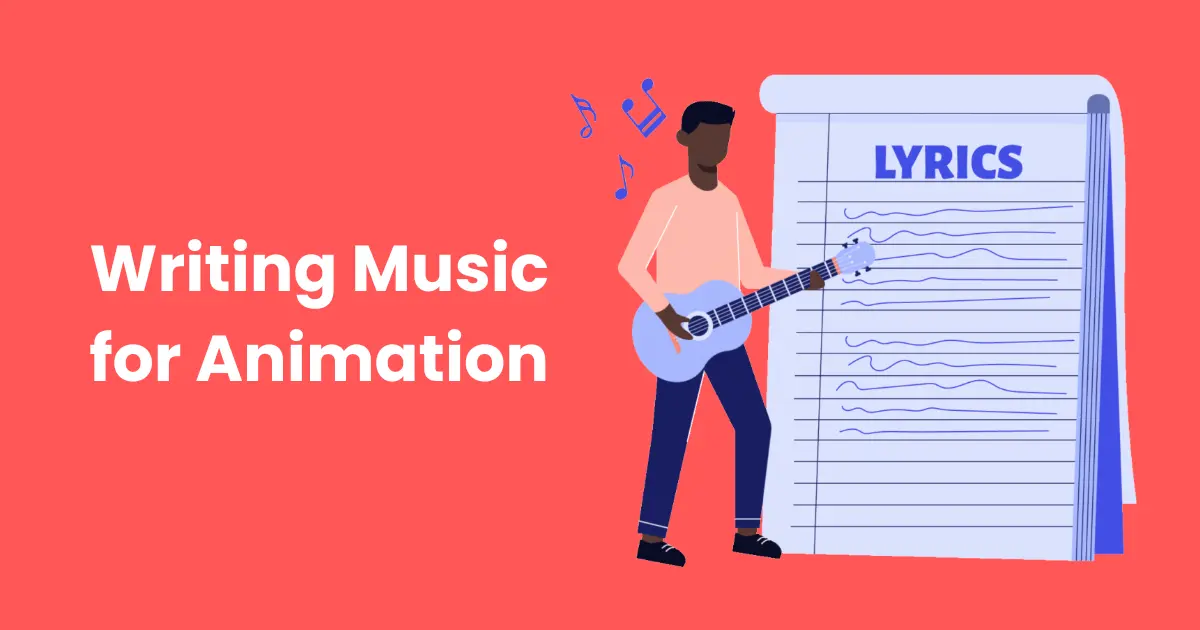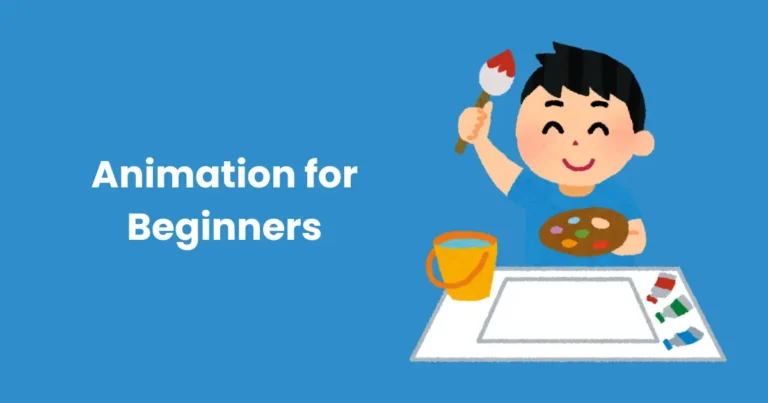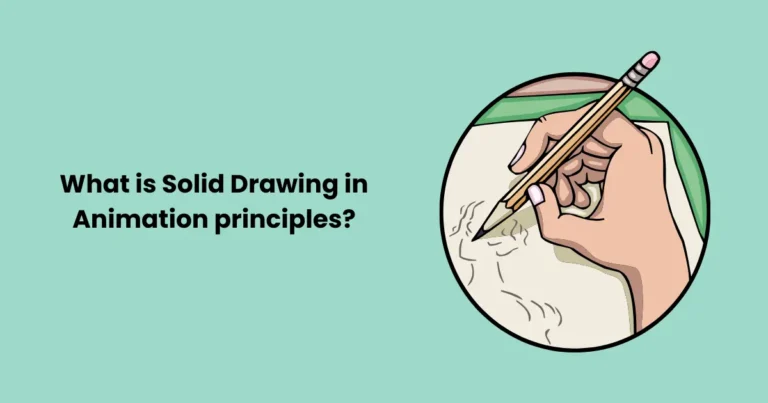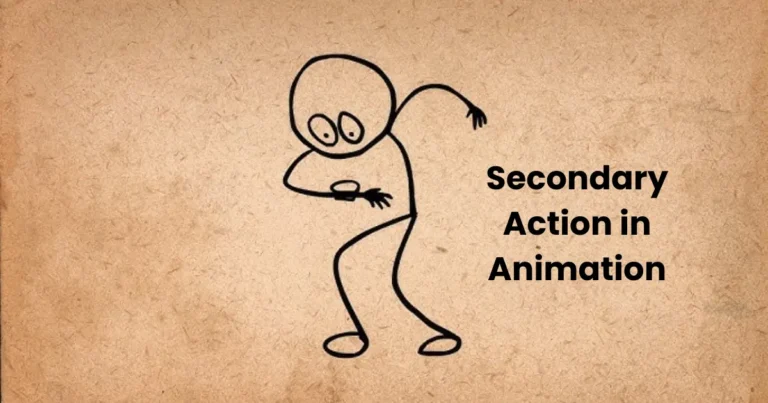Writing Music for Animation | Best guide for Song Making and composing

Contents
Music plays a pivotal role in animation, shaping the emotional and narrative landscape of the story. When done correctly, writing music for animation transforms the viewing experience, adding depth, drama, and excitement that complements the visual elements. It’s not just about creating background tunes—it’s about enhancing the emotional resonance of each scene, guiding the audience’s reactions, and elevating the animation from mere visuals to a full sensory experience. The right music can turn a simple animated moment into a powerful, unforgettable sequence.
The significance of music in animation goes beyond mere accompaniment. It works in perfect harmony with the visuals, reinforcing the themes, defining characters, and supporting the plot. Whether it’s the energetic beats that accompany a high-speed chase, the whimsical tones that underscore a character’s journey, or the dramatic crescendos that heighten a climactic moment, writing music for animation is essential to conveying the right message. Music can set the mood, establish the world, and even become a character in itself, connecting with viewers on an emotional level that words and images alone might not achieve.
Step-by-Step Guide: How to Write Music for Animation
Writing music for animation is a creative and technical process that involves blending the emotional weight of the story with the visual elements. The music must sync with the animation’s rhythm, enhance the storyline, and elevate the audience’s emotional experience. Here’s a step-by-step guide on how to write music for animation, from understanding the project to composing the final score.

3.1. Analyzing the Animation’s Emotional Tone
Before you even start composing, it’s essential to understand the emotional tone of the animation. Writing music for animation requires an understanding of what kind of emotional journey the audience will experience. Watch the animation or review the storyboards to get a feel for the mood.
- Is the tone light-hearted or serious?
- Is there a specific emotional arc for the main character?
- What are the key themes?
For example, a whimsical story might call for playful, upbeat music, while a more dramatic narrative may need darker, more somber tones. Think about how the animation’s visuals—colors, character designs, and movements—set the mood, and translate that into the type of music that will best complement it.
3.2. Matching Music to Animation Timing and Pacing
Animation relies heavily on precise timing, and music must align with the visual pacing to achieve the right effect. Whether the animation features quick action scenes or slower, more deliberate moments, the music must match the rhythm of the visuals.
- Timing of action: Is the scene fast-paced or slow? For fast-moving sequences, choose music with quick tempos, staccato rhythms, and high energy. For slower moments, consider longer, more flowing musical phrases.
- Matching character movements: The music should enhance the timing of a character’s movement. In slapstick animation, for instance, music might sync with exaggerated physical motions, like a character falling or dodging obstacles, using rhythmic changes and accents to highlight those actions.
Timing is key, so don’t rush through this phase. Watch the animation several times, noting moments where music could highlight specific actions or transitions. Writing music for animation requires careful synchronization to ensure it doesn’t overshadow the visuals but rather works in harmony with them.
3.3. Creating Melodies and Harmonies for Animation
Now that you understand the emotional tone and pacing, it’s time to start composing. Melodies are often the heart of the music in animation, as they help define characters and key themes. When creating melodies, consider the animation’s themes and the personalities of its characters.
- Character themes: Develop specific motifs for characters that reflect their personality traits or journey. For instance, a character going through an emotional growth arc might have a melody that starts small but gradually becomes more expansive and heroic.
- Harmonies: Once you’ve crafted a melody, layering harmonies adds depth and complexity. For example, a major harmony could evoke feelings of triumph, while a minor harmony might create a sense of sadness or suspense.
The melodies should be memorable and fitting to the animation’s world. Think of how music in classic animations, like Disney’s The Lion King, can evoke both emotion and action through powerful, sweeping melodies paired with strong harmonies.
3.4. Choosing Instrumentation for Animation Music
Choosing the right instruments is vital when writing music for animation, as it helps create the atmosphere and reinforces the mood of the animation. Instruments carry emotional weight, and each instrument or combination of instruments can bring a different texture to the music.
- Orchestral instruments (strings, brass, woodwinds) can create grand, epic scores perfect for high-stakes moments or sweeping landscapes.
- Percussion instruments (drums, xylophones) can add energy and drive, making them ideal for action-packed sequences or comedic timing.
- Electronic instruments or synthesizers are often used in more futuristic, fantasy, or whimsical animations, lending a unique, otherworldly feel.
Consider the world of the animation and select instruments that align with the setting and style. Whether you’re composing for a jungle adventure or a futuristic sci-fi world, the instrumentation should evoke the right atmosphere.
3.5. Writing Themes and Motifs for Characters
One of the most powerful aspects of writing music for animation is developing recurring themes and motifs. These musical phrases are associated with characters, places, or specific emotions and can evolve throughout the animation to match a character’s development.
- Character motifs: Write a short, recognizable melody for each main character. As the character changes or grows, their musical motif can evolve, reflecting their journey. For example, a villain’s theme might begin with darker, slower motifs and gradually become more intense as their plot unfolds.
- Environmental motifs: Locations or settings can also have their own musical identity. The music associated with a magical forest will differ from that of a bustling city or a dark, eerie dungeon.
By revisiting and developing these motifs throughout the animation, you create a sense of musical continuity, deepening the audience’s connection to the story and characters.
Using Music to Enhance Storytelling in Animation
Music in animation isn’t just about creating pleasant background sounds; it’s an essential storytelling tool that works in tandem with the visual elements to convey emotion, develop characters, and propel the narrative forward. By understanding how to use music effectively, animators and composers can craft a deeper, more immersive experience for the audience. Writing music for animation requires a delicate balance, as the music must complement the animation’s timing, mood, and themes, without overshadowing the visuals.

4.1. Setting the Emotional Foundation
One of the most critical roles of music in animation is to establish and amplify the emotional atmosphere of a scene. The emotional tone sets the groundwork for how the audience will perceive the action and characters, and music plays a central role in this process. Whether it’s joy, fear, tension, or nostalgia, the music needs to work with the animation to highlight these emotions.
For instance, writing music for animation that aligns with the visuals can increase the emotional stakes of a particular scene. A heartwarming scene between two characters may feature soft piano notes or a soothing string section, pulling the audience deeper into the moment. Conversely, a high-octane action sequence might require fast-paced percussion and brass to energize the viewer and keep the excitement high. The emotional power of music helps connect the viewer to the characters, events, and themes in a more visceral way, ensuring that the animation doesn’t just show what’s happening, but also makes the audience feel it.
4.2. Music as a Narrative Device
In animation, music can function as an invisible thread that guides the audience through the story. Writing music for animation allows composers to use motifs, themes, and recurring musical ideas to emphasize key narrative moments, mark transitions, and provide subtle cues about the direction of the plot. For example, a simple, recurring melody tied to a character’s development can signify their emotional or psychological growth throughout the film.
The music can also act as a reflection of the internal state of the characters. A character dealing with conflict may have a theme that shifts from minor to major, signaling their journey toward resolution. On the flip side, a villain may have dissonant, unsettling themes that grow in intensity as they move closer to their goals, signaling danger ahead. By using these musical cues, writing music for animation not only supports the story but also actively shapes the viewer’s understanding of character development and plot progression.
4.3. Creating Atmosphere and World-Building
Music is also a powerful tool for creating atmosphere and world-building in animation. The soundscape established by the music can immerse viewers in the animated world, making them feel as though they are part of the story. For example, an animated fantasy world may be underscored by orchestral arrangements that evoke a sense of wonder and mystery, while a futuristic animation could use electronic music to create a high-tech, otherworldly atmosphere.
By carefully selecting instruments and composing music that fits the visual setting, writing music for animation contributes to the tone of the world. Think about how iconic soundtracks, like the music in How to Train Your Dragon or Avatar, not only reflect the characters and themes but also give life to the setting. Music helps define the world’s rules and emotional landscape, guiding the audience’s expectations of the story.
4.4. Syncing Music with Animation’s Timing and Rhythm
In animation, timing is everything. Music must be tightly synced with the animation’s rhythm to enhance the action and flow of scenes. Whether it’s the precise synchronization of sound with a character’s movements, or the music changing pace with the scene’s intensity, writing music for animation requires a detailed understanding of the animation’s structure. The rhythm of the music can accentuate moments of action, humor, or drama, and even bring visual jokes to life.
For example, in a comedic sequence, the timing of a visual gag can be mirrored by the music, using rapid changes in rhythm or the sudden introduction of a quirky melody to highlight the punchline. Similarly, in an intense action scene, the music can shift in tempo and dynamics to match the movement on screen, ensuring the audience is on the edge of their seat. By carefully controlling the timing of music and visuals, composers can elevate the animation, making every moment feel purposeful and engaging.
4.5. Using Music to Enhance Themes and Motifs
Music has the unique ability to reinforce the underlying themes of an animation. By using recurring musical motifs tied to specific themes or ideas, composers can create a sense of continuity throughout the animation. For example, a theme related to hope might be introduced early in the film, only to reappear in pivotal moments, signaling a character’s emotional or narrative shift toward optimism.
Writing music for animation with recurring motifs helps create emotional callbacks and reinforces the message of the animation. Think of how motifs associated with friendship, love, or rivalry can evolve throughout the story to underscore the character’s relationships or the central message of the narrative. These motifs add a layer of depth to the storytelling, as they subtly cue the audience into the thematic undercurrents that run through the animation.
Tips for Composing Music for Different Types of Animation
Composing music for animation requires a deep understanding of the animation’s style, tone, and audience. Each type of animation—whether it’s 2D, 3D, stop-motion, or hybrid—has its own unique demands that influence the approach to music composition. Below are practical tips on how to tailor your music for various animation styles, ensuring that the music complements the animation and enhances the storytelling.

5.1. Composing Music for 2D Animation
2D animation typically relies on hand-drawn or digitally created visuals and tends to have a more stylized, exaggerated look. The music for 2D animation should match the energy and fluidity of the movement.
- Keep the energy high and flexible: 2D animation is often more expressive and energetic. Music in these types of animations can be fast-paced with frequent changes in rhythm to match the animation’s quick movements. Using lively rhythms or playful melodies can complement the exaggerated gestures and visual gags typical of 2D animation.
- Use clear motifs for characters: Characters in 2D animation often have distinct personalities and actions. A recurring theme or motif for each character can help to underscore their emotions and motivations. For example, a hero might have a bold and triumphant theme, while a mischievous sidekick could have a whimsical, unpredictable melody.
- Exaggerate the timing: Timing in 2D animation is often more stylized, with movements that don’t adhere to real-world physics. Music should reflect this, with flexible tempos or rhythmic changes that complement exaggerated actions. Syncing the music with the action (e.g., changing pace when a character jumps or spins) can enhance the humor or drama of the scene.
5.2. Composing Music for 3D Animation
3D animation is often more realistic in movement, texture, and depth, creating a more immersive experience for the viewer. Music in 3D animation should have a sense of grandeur and a dynamic range to match the depth and detail of the visuals.
- Focus on depth and atmosphere: In 3D animation, the music needs to create a sense of space and environment. Use orchestral or layered arrangements that allow for depth and resonance. For example, lush strings or full-bodied brass can underscore vast landscapes or moments of wonder, while subtle, ambient music can support quieter, introspective scenes.
- Match the realism: While 3D animation often maintains exaggerated moments, it’s typically more grounded in real-world physics. Therefore, music should balance realism with creative expression. For instance, the use of percussion in an action scene might be more forceful or intense to align with the physicality of the characters.
- Enhance character depth: In 3D animation, characters are often more lifelike and nuanced. Music can reflect this depth by incorporating emotional complexity and thematic variation. Characters’ themes can evolve throughout the film to show growth and change, just like the visuals do.
5.3. Composing Music for Stop-Motion Animation
Stop-motion animation has a tactile, hand-crafted feel that can create a unique atmosphere in the animation world. Since the movements in stop-motion are often deliberate and slow, the music needs to match the careful pacing and texture of the animation.
- Use organic sounds: Since stop-motion often features physical objects or puppets, the music can reflect the handcrafted nature of the medium. Using acoustic instruments like strings, piano, or woodwinds can help to create a warm, intimate feel. Alternatively, percussion or unique sound effects (like tapping, clapping, or tapping on wood) can add a distinctive texture that matches the physicality of the animation.
- Pacing is crucial: Stop-motion often involves slow, methodical movements, so music should mirror this rhythm. Slow tempos with sustained chords or long melodic lines can help to build atmosphere, allowing the viewer to savor the details in the animation.
- Embrace whimsy or surrealism: Stop-motion animation, especially when it’s whimsical or fantastical, benefits from music that is slightly quirky or offbeat. This could include the use of unusual instruments, playful melodies, or dissonant harmonies to enhance the surreal qualities of the animation.
Common Mistakes to Avoid When Writing Music for Animation
Composing music for animation is an art that involves a deep understanding of both music and animation. While creating a soundtrack that complements the visuals, enhances storytelling, and elevates the emotional impact, there are several pitfalls that composers should avoid. Below are some of the most common mistakes to watch out for when writing music for animation, along with tips on how to sidestep them.

6.1. Ignoring the Timing and Rhythm of Animation
One of the most critical aspects of writing music for animation is timing. Animation often relies on precise movements and beats, and if the music is not in sync with the action, it can feel disjointed or forced.
- Mistake: Composers sometimes overlook the timing of animated movements, leading to music that either lags behind or rushes ahead of the visuals. For example, in an action sequence, the rhythm of the music may not match the quick pace of the character’s movements, which can create a disconnect for the audience.
- How to Avoid It: Pay close attention to the animation’s pacing and adjust the music’s tempo accordingly. If the scene is fast-paced, match the tempo of the music to the speed of the action, ensuring that the rhythm enhances the intensity. In slower scenes, allow the music to breathe, syncing with the animation’s deliberate movements.
6.2. Overcomplicating the Music
Sometimes composers try to pack too many complex elements into the music, thinking that it will make the animation more sophisticated. However, overcomplicating the music can detract from the animation and confuse the audience.
- Mistake: Using too many instruments or complex harmonies can result in a cluttered sound, especially in animated scenes that rely on visual clarity. This is particularly problematic in lighter or more whimsical animations, where the music can easily overwhelm the visuals.
- How to Avoid It: Keep the music simple and ensure that it serves the animation rather than competing with it. Choose instruments and harmonies that support the action, characters, and tone without distracting from the visuals. Sometimes, less is more, and a sparse, focused arrangement can be more effective than a complex one.
6.3. Not Considering the Emotional Tone of the Scene
Music should always align with the emotional tone of the animation. A common mistake is to use music that doesn’t fit the mood of the scene, resulting in a mismatch between the visuals and the music, which can break immersion for the audience.
- Mistake: Using overly dramatic or intense music in a lighthearted scene, or vice versa, can create tonal inconsistencies. For example, a comedic moment might be underscored by overly serious music, making the scene feel awkward or off-balance.
- How to Avoid It: Analyze the emotional tone of each scene and choose music that aligns with it. For a funny or playful moment, use light, upbeat music. For emotional or dramatic scenes, select music that reflects the depth of the moment. Matching the mood of the music to the visuals helps ensure that the audience is emotionally engaged in the animation.
Conclusion
Writing music for animation is a nuanced and collaborative process that requires a deep understanding of both the medium and the emotional goals of the project. By avoiding common mistakes, such as disregarding timing, overcomplicating the music, or neglecting the importance of sound design, composers can craft soundtracks that perfectly complement the animated visuals. Music should enhance the storytelling, align with the emotional tone of the scene, and reflect the unique characteristics of the animation style. When done right, the music becomes an essential element that elevates the animation, creating a more immersive and emotionally resonant experience for the audience.
Whether it’s matching the rhythm of 2D animation, enhancing the realism of 3D animation, or adding texture to stop-motion, the right musical choices can significantly contribute to the overall success of the animation. By being thoughtful and intentional in the composition process, composers can create memorable and impactful music that makes the animation truly come to life.






